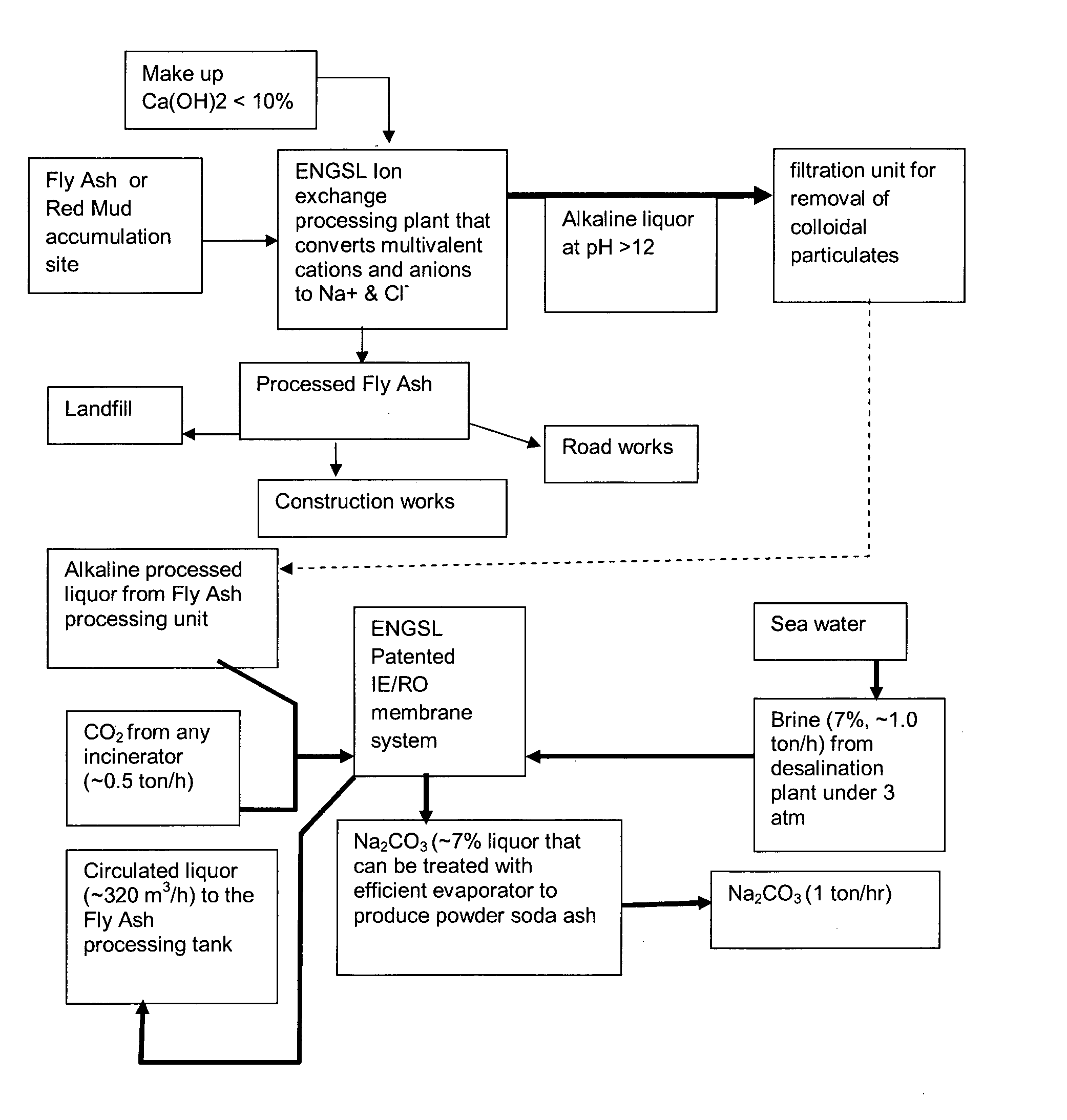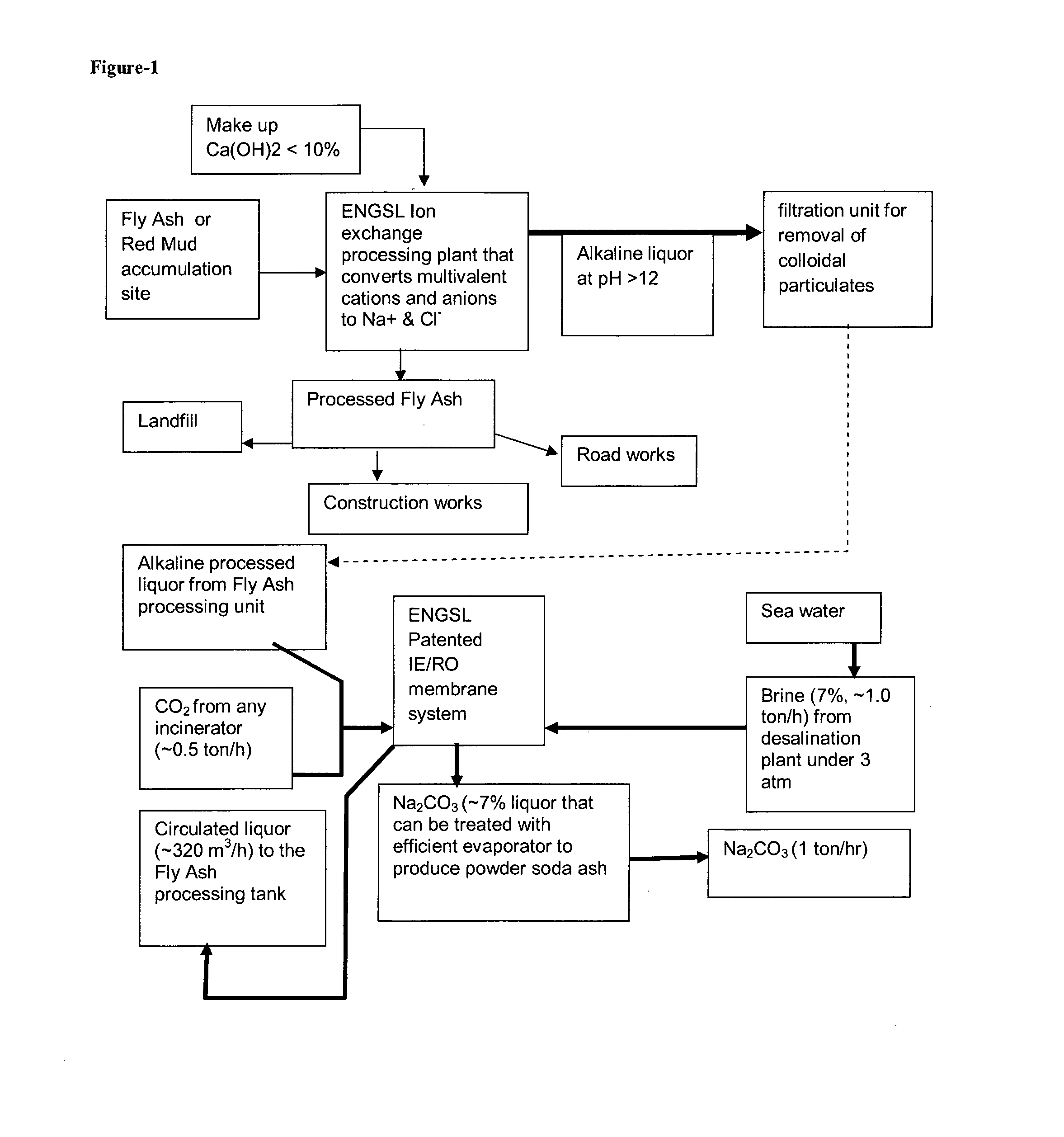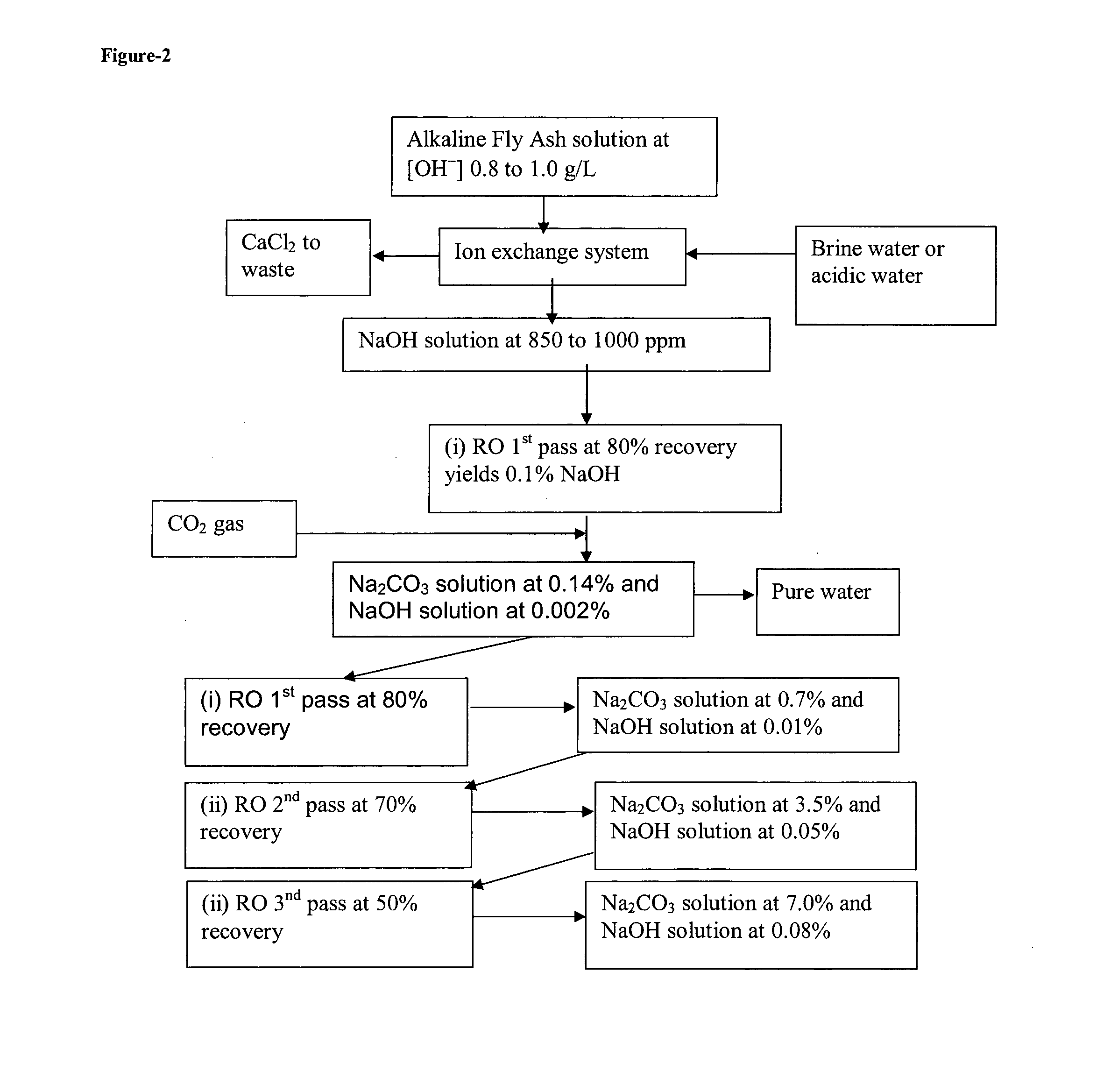Using alkaline fly ash and similar byproducts in an ion-exchange/reverse osmosis process for the production of sodium carbonate
a technology of sodium carbonate and ion exchange, which is applied in the direction of separation processes, instruments, energy input, etc., can solve the problems of inability to consider carbon capture, low efficiency, and inability to collect carbonate or bicarbonate, so as to reduce the local impact and less energy
- Summary
- Abstract
- Description
- Claims
- Application Information
AI Technical Summary
Benefits of technology
Problems solved by technology
Method used
Image
Examples
Embodiment Construction
[0025]A copy of Excel worksheet gives detailed mass balance analysis of the entire process starting with the masses of hydroxides involved and required water and ends with the production of 18 kg of soda ash from 75 kg of fly ash.
REFERENCES
[0026]1—Uliasz-Bochenczyk, Alicja; Mokrzycki, Eugeniusz; Piotrowski, Zbigniew; Pomykala, Radoslaw, “Estimation of CO2 sequestration potential via mineral carbonation in fly ash from lignite combustion in Poland”. Energy Procedia, (2009), 1(1), 4873-4879.[0027]2—Uliasz-Bochenczyk, Alicja; Mokrzycki, Eugeniusz, “CO2 sequestration with the use of fly ash from hard coal and lignite combustion”. Slovak Geological Magazine, (2009), Volume Date 2008, (Spec. Issue), 19-22. [Journal written in English].[0028]3—Montes-Hernandez, G.; Perez-Lopez, R.; Renard, F.; Nieto, J. M.; Charlet, L. “Mineral sequestration of CO2 by aqueous carbonation of coal combustion fly-ash.”, Journal of Hazardous Materials, (2009), 161(2-3), 1347-1354.[0029]4—Soong, Y.; Fauth, D. L...
PUM
| Property | Measurement | Unit |
|---|---|---|
| concentration | aaaaa | aaaaa |
| pH | aaaaa | aaaaa |
| pressure | aaaaa | aaaaa |
Abstract
Description
Claims
Application Information
 Login to View More
Login to View More - R&D
- Intellectual Property
- Life Sciences
- Materials
- Tech Scout
- Unparalleled Data Quality
- Higher Quality Content
- 60% Fewer Hallucinations
Browse by: Latest US Patents, China's latest patents, Technical Efficacy Thesaurus, Application Domain, Technology Topic, Popular Technical Reports.
© 2025 PatSnap. All rights reserved.Legal|Privacy policy|Modern Slavery Act Transparency Statement|Sitemap|About US| Contact US: help@patsnap.com



